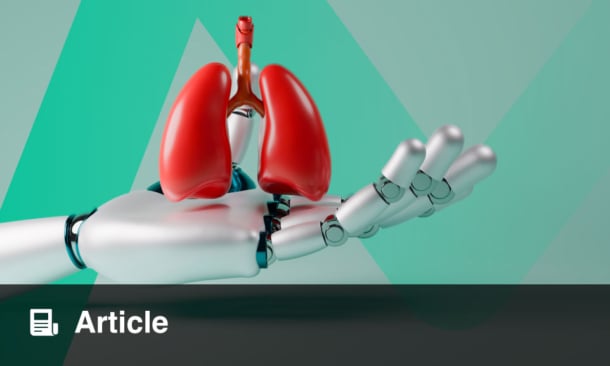Authors: *Ourania S. Kotsiou¹
1. Laboratory of Human Pathophysiology, Department of Nursing, University of Thessaly, Larissa, Greece
*Correspondence to [email protected]
Disclosure: The author has declared no conflicts of interest.
Keywords: Asthma, COPD, European Respiratory Society (ERS) 2025, interstitial lung disease, low lung volumes, lung function, small airways disease.
Citation: EMJ Respir. 2025;13[1]:30-32. https://doi.org/10.33590/emjrespir/UCOR4266
![]()
THIS YEAR’S European Respiratory Society (ERS) Congress 2025, held in Amsterdam, the Netherlands, placed a strong spotlight on the ‘forgotten zone’ of the respiratory system: the small airways. The session entitled ‘Small lungs, big consequences: the origins, consequences and clinical implications of low lung volumes’ captivated clinicians and researchers alike, urging a paradigm shift from traditional spirometry-centred perspectives to a holistic appreciation of distal airway physiology.
SMALL LUNG SYNDROME: THE NEED TO RECLASSIFY CHRONIC LUNG DISEASE
Opening the session, Peter Burney, Imperial College London, UK, called for a fundamental reclassification of chronic lung diseases around lung size and developmental potential, rather than solely spirometric ratios. He argued that “the term ‘obstructive’ has served us well, but it obscures the fact that many patients begin life with small lungs, not damaged ones.”
Drawing on population studies, Burney proposed that ‘small lung syndrome’ represents a common pathway linking asthma, COPD, and restrictive patterns through impaired growth and airway remodelling. Early-life nutrition, pollution, and maternal smoking were identified as root causes, demanding a shift from late-stage diagnosis to lifelong lung health monitoring.1,2
TRACKING LUNG FUNCTION AND RESPIRATORY DEVELOPMENT FROM BIRTH TO HEALTHY OLD AGE
Shyamali Dharmage, University of Melbourne, Australia, presented compelling longitudinal data from the TAHS and CHILD cohorts,3,4 tracking lung function trajectories from birth into late adulthood. Her findings revealed that low maximal lung function in early adulthood predicts premature respiratory decline, regardless of smoking or occupational exposure.
She underscored that early interventions targeting respiratory infections, allergens, and environmental pollutants during critical developmental windows could alter lifetime lung trajectories. The message resonated strongly: the foundation for chronic lung disease is laid not in midlife, but in the first 1,000 days of life.
SMALL LUNGS:IMPLICATIONS FOR LOW- AND MIDDLE-INCOME COUNTRIES
Obianuju Ozoh, University of Lagos, Nigeria, shifted the focus to global inequities, revealing the high prevalence of small lungs in low- and middle-income countries. Her multi-country analyses showed that reduced lung volumes, often interpreted as restrictive or mixed patterns, may reflect stunted lung growth due to malnutrition, biomass exposure, and early-life infections rather than classic interstitial disease.5
Ozoh warned that misclassification of small lungs as ‘normal variants’ perpetuates underdiagnosis and undertreatment in vulnerable populations.6 She urged the ERS community to adopt regionally appropriate reference values and advocate for lung health equity as a global priority.
ARE CLINICIANS MISSING TREATABLE CARDIOVASCULAR DISEASE IN PATIENTS WITH LOW FORCED VITAL CAPACITY?
Closing the session, Christer Janson, Uppsala University, Sweden, highlighted a powerful clinical overlap: low forced vital capacity not only predicts respiratory morbidity, but also signals unrecognised cardiovascular disease.
Citing epidemiological data, he demonstrated that individuals with low forced vital capacity, even in the absence of airflow limitation, show higher rates of hypertension, heart failure, and metabolic syndrome.7 He called for integrated screening strategies combining spirometry with cardiovascular risk assessment, emphasising that “low lungs may be the first warning sign of a failing heart.”
CONVERGING THEMES:A PARADIGM SHIFT
Across these talks, one theme was unmistakable: lung volume matters. Whether reduced by early developmental insults, environmental exposures, or systemic comorbidities, small lungs translate into big clinical consequences.
Speakers agreed that traditional dichotomies (obstructive versus restrictive, paediatric versus adult) are blurring. The future may demand a new taxonomy of lung disease rooted in developmental biology, environmental context, and systemic interaction.
CONCLUDING REMARKS
As the lights dimmed in the Amsterdam Congress Centre, the audience left with a renewed appreciation that the smallest lungs may tell the biggest stories. The session’s unifying message was clear: “Rethinking small airways disease means rethinking what we call normal.”
For clinicians and researchers alike, ERS 2025 marked a turning point, from treating damaged lungs to understanding how they grow, adapt, and interact across the lifespan. The challenge now lies in transforming these insights into early detection, equitable diagnostics, and therapies that truly breathe life into global respiratory health.






